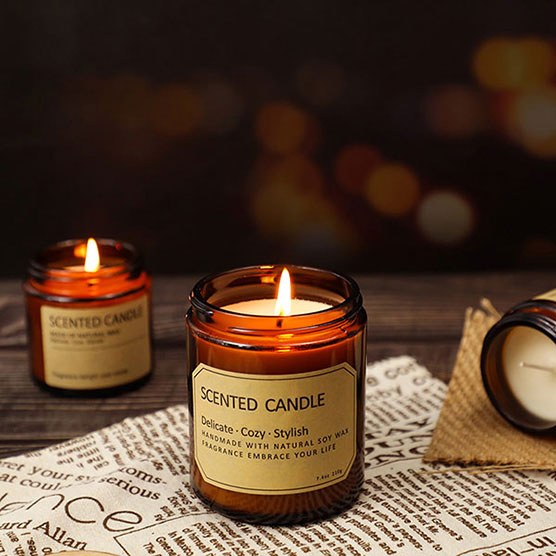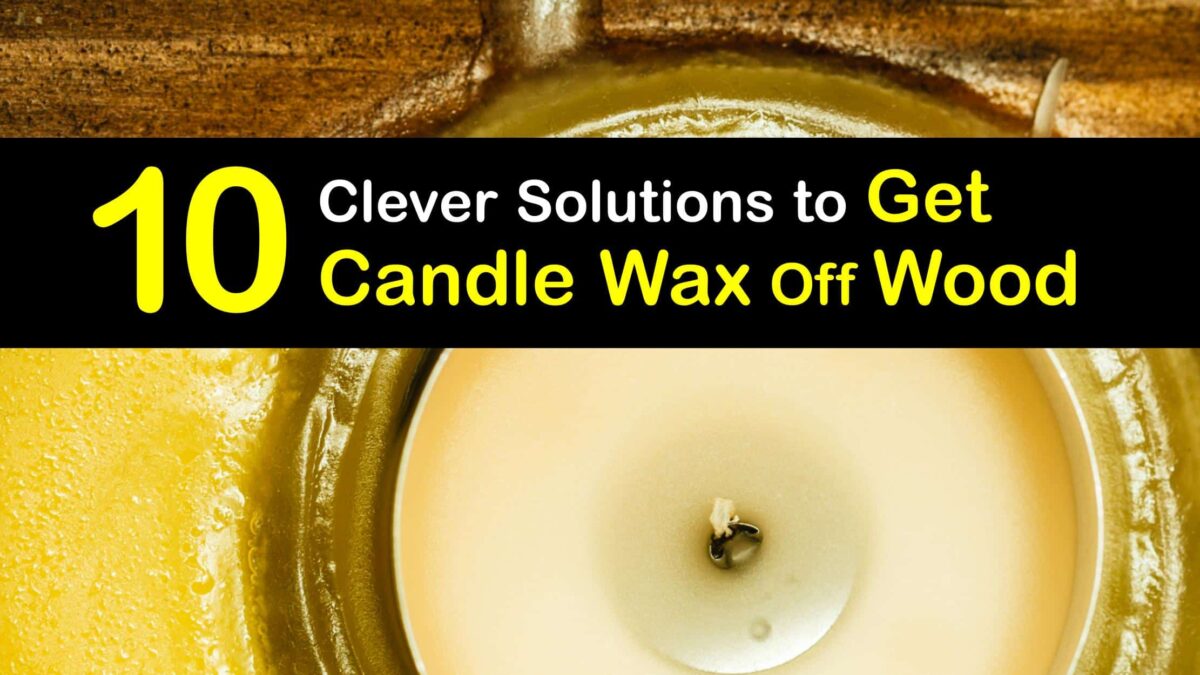Candlelight casts a warm, inviting glow, creating cherished memories around the dinner table or during a romantic evening. But the magic of candlelight can sometimes leave a less-than-magical residue on your precious wood floors. A spilled candle can transform a lovely evening into a panicked moment, wondering how to remove the stubborn wax without damaging the wood. But worry no more! This guide will walk you through the steps to remove candle wax safely and effectively, leaving your floors gleaming like new.

Image: aromaleap.com
Candle wax, despite its beauty, can be surprisingly tenacious. The heat of the flame melts the wax, allowing it to seep into the wood’s pores. Trying to scrape it off immediately often results in a bigger mess. However, don’t despair! With the right tools and a little patience, you can remove candle wax without sacrificing the integrity of your beautiful wood floors.
Understanding the Different Types of Candle Wax
Candle wax is generally classified into several categories, each with its own unique characteristics regarding removal:
1. Paraffin Wax:
The most common type of candle wax, paraffin is derived from petroleum and tends to be harder and more brittle than other waxes. This makes it easier to remove, especially when cooled.
2. Soy Wax:
Soy wax, a natural and environmentally friendly alternative to paraffin wax, is known for its softer texture. Despite its softer nature, it can still be tricky to remove, especially if it’s been allowed to soak into the wood for an extended period.

Image: www.tipsbulletin.com
3. Beeswax:
Beeswax, a natural wax with a slightly sticky texture, can be more challenging to remove than paraffin or soy wax. It tends to be more adhesive and can cling stubbornly to wood surfaces.
4. Gel Wax:
Gel wax, often used in decorative candles, is a blend of paraffin wax with a gel-like consistency. While it can be more difficult to remove due to its sticky nature, it is generally easier than beeswax.
The Do’s and Don’ts of Candle Wax Removal:
Before diving into the techniques, it’s crucial to understand what works and what doesn’t in removing candle wax from your wood floors.
Do’s:
* Start with a Cold Approach: When dealing with a fresh spill, allow the wax to cool and harden completely. This will make it easier to remove without smearing or pushing it further into the wood.
* Use a Sharp Object: A dull knife, scraper, or even a credit card can be used to gently scrape away excess wax. Work carefully to avoid scratching the wood surface.
* Work in Sections: To avoid overwhelming yourself, focus on removing the wax in small sections to ensure you don’t miss any spots and work efficiently.
* Always Test on an Inconspicuous Area: Before using any cleaning agent on your entire floor, always test it on a small, hidden spot to ensure it doesn’t damage the finish or stain the wood.
Don’ts:
* Never Use Hot Water or Heat: Heat can further melt the wax and make it more difficult to remove. Avoid using a hairdryer or heat gun, as they can also damage the wood floor finish.
* Avoid Harsh Abrasives: Strong chemicals or harsh abrasives can damage the delicate finish of your wood floors. Avoid using steel wool, sandpaper, or any products that scratch the surface.
* Don’t Apply Excessive Pressure: Scraping too vigorously can damage the wood floor, especially if the finish is old or thin. Use gentle pressure and a steady hand.
* Don’t Leave Wax to Sit for Long Periods: Removing wax as soon as possible after it spills is always the best approach. Letting it dry and harden can make it more challenging to remove.
Techniques for Removing Candle Wax
Now that you understand the basics of candle wax removal, let’s delve into the most effective techniques for different types of wax.
1. Cold Method for Paraffin Wax:
For paraffin wax, a simple cold approach often suffices. After the wax has cooled and hardened, use a dull knife or scraper to gently lift the wax off the surface. You can also use a credit card or a plastic spatula for a gentler approach. Work carefully, scraping away the wax in thin layers to avoid scratching the wood. If any residue remains, you can try the following methods.
2. Ice Cubes for Paraffin Wax:
If the wax has adhered firmly to the wood, use a few ice cubes wrapped in a plastic bag and placed directly on the affected spot. Allow the ice to sit for a few minutes to chill and harden the wax. Once the wax is brittle, use a scraper or dull knife to gently remove it. This technique is effective for removing larger chunks of wax.
3. Ironing for Candle Wax Removal (Paraffin and Soy Wax):
Ironing is a surprisingly effective method for removing candle wax, particularly paraffin and soy wax. Remember to always iron on a low setting and protect your floor by placing a clean cloth or paper towel between the iron and the wood. Place a brown paper bag on top of the wax and carefully glide the iron over the bag. The heat will melt the wax, and the paper will absorb it. Continue until all the wax is removed. Remember to test on an inconspicuous area first to ensure this method doesn’t leave any marks on your floor.
4. Laundry Detergent for Beeswax and Gel Wax:
For more stubborn waxes like beeswax and gel wax, a mild laundry detergent like Woolite can be surprisingly effective. Mix a small amount of laundry detergent with warm water and apply it to the affected area. Let it sit for a few minutes, then gently scrub the wax with a soft cloth or sponge. Rinse the area thoroughly with clean water and dry it completely. This method can help break down the wax and make it easier to remove.
5. Commercial Wax Removers:
In some cases, a commercial wax remover may be necessary. These products are specifically designed to break down wax and make it easier to remove. However, always test a small, inconspicuous area before applying a commercial remover to your entire floor. Remember to follow the manufacturer’s instructions carefully and wear gloves for protection.
6. Baking Soda for Minor Residu:
After using other methods, you may notice a slight residue. To remove this, make a paste of baking soda and water, apply it to the area, and let it sit for a few minutes. Scrub gently with a soft cloth or sponge and rinse with water.
Final Steps: Polishing and Protecting Your Floor
After removing the wax, it’s essential to polish and protect your wood floor, restoring it to its original beauty. The following steps will help preserve your investment:
1. Cleaning:
Clean the entire floor thoroughly with a wood floor cleaner designed for your specific type of wood flooring. This will remove any remaining wax residue and debris from the cleaning process.
2. Polishing:
Consider using a wood floor polish to enhance the shine and protect the finish. Follow the manufacturer’s instructions carefully, and avoid applying too much polish, as this can leave a cloudy residue.
3. Sealing (Optional):
For added protection, you can seal your wood floors. This creates a barrier against moisture and wear and tear. Choose a sealant suitable for your specific wood floor finish and apply it according to the manufacturer’s instructions.
4. Maintaining Your Floor:
To prevent future wax spills, consider investing in protective mats or placemats near areas where you burn candles frequently. This will help to minimize the risk of spills and make maintenance easier.
Expert Tips for Preventing Wax Spills:
Here’s what experts recommend to prevent candle wax mishaps and keep your wood floors pristine:
* Use Candle Holders Designed for Your Floors: Choose candle holders with wide bases for stability. Avoid placing candles near furniture or other items that could easily be knocked over.
* Invest in Protective mats: Place mats, rugs, or runners under candles to catch any accidental drips or spills.
* Keep Candles Away from Heat Sources: Avoid placing candles near radiators, vents, or open fireplaces, as the heat can melt the wax prematurely.
* Don’t Leave Candles Unattended: Never leave a burning candle unattended, especially if pets or children are present.
* Trim Wicks Regularly: Trimming wicks regularly prevents excessive soot and dripping and enhances candle performance.
How To Get Candle Wax Off Wood Floor
Conclusion:
Candle wax spills can be a dreaded moment for any homeowner, but with the right methods and a little patience, you can remove candle wax from your wood floors effectively and restore their beauty. Remember, prevention is key, so keep these tips in mind to protect your floors and ensure a worry-free candlelight experience. Now, go forth and enjoy the warm glow of candlelight knowing you’re well-equipped to handle any unexpected incidents!






